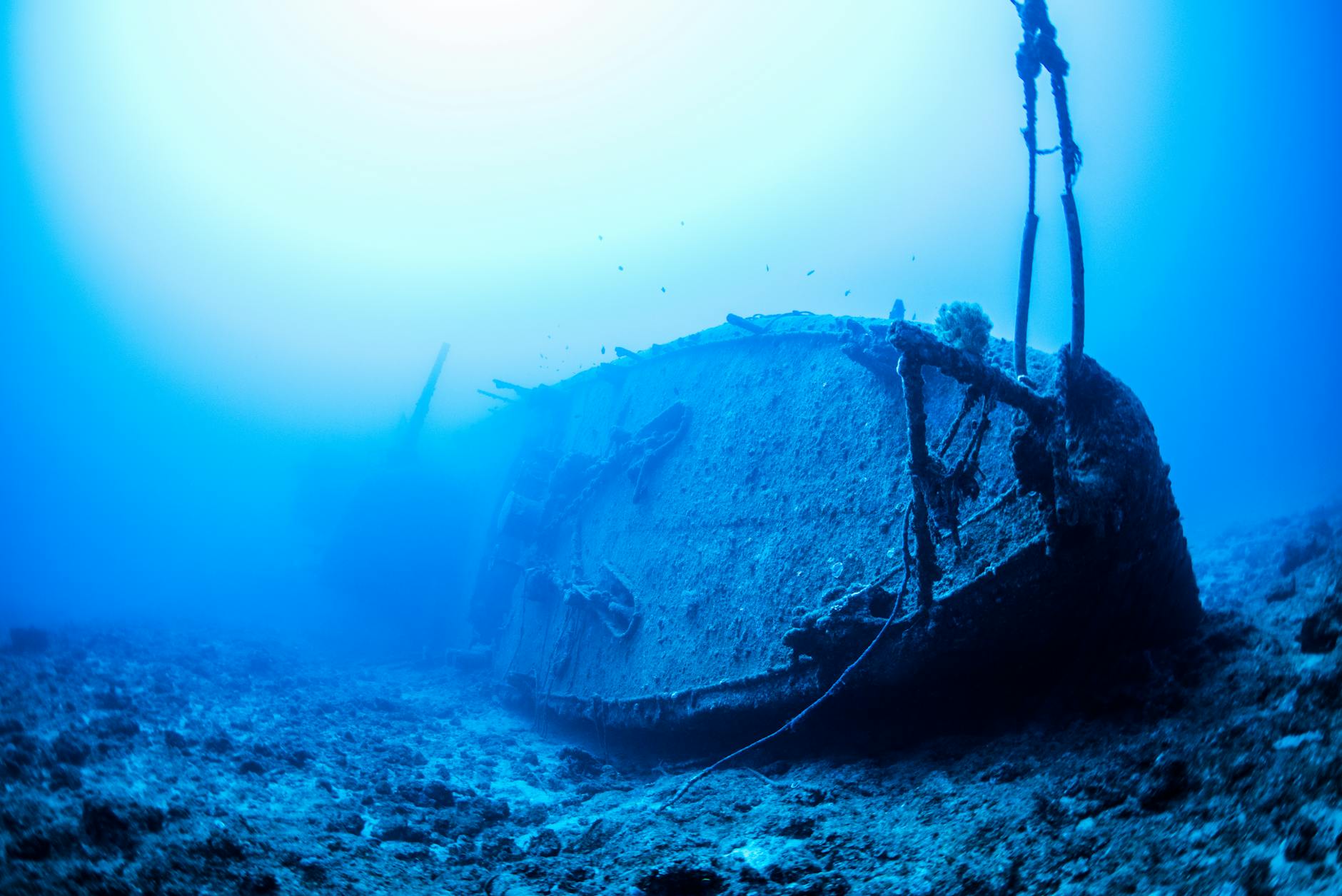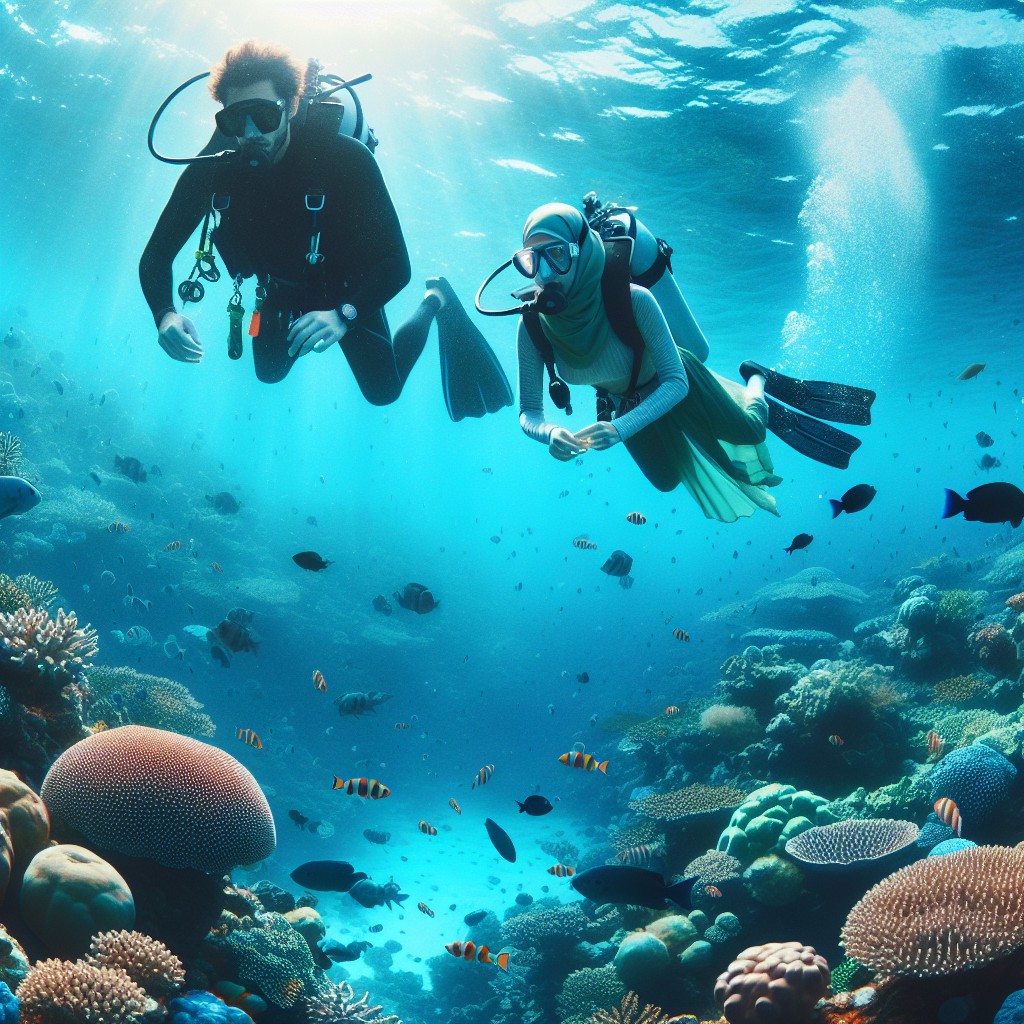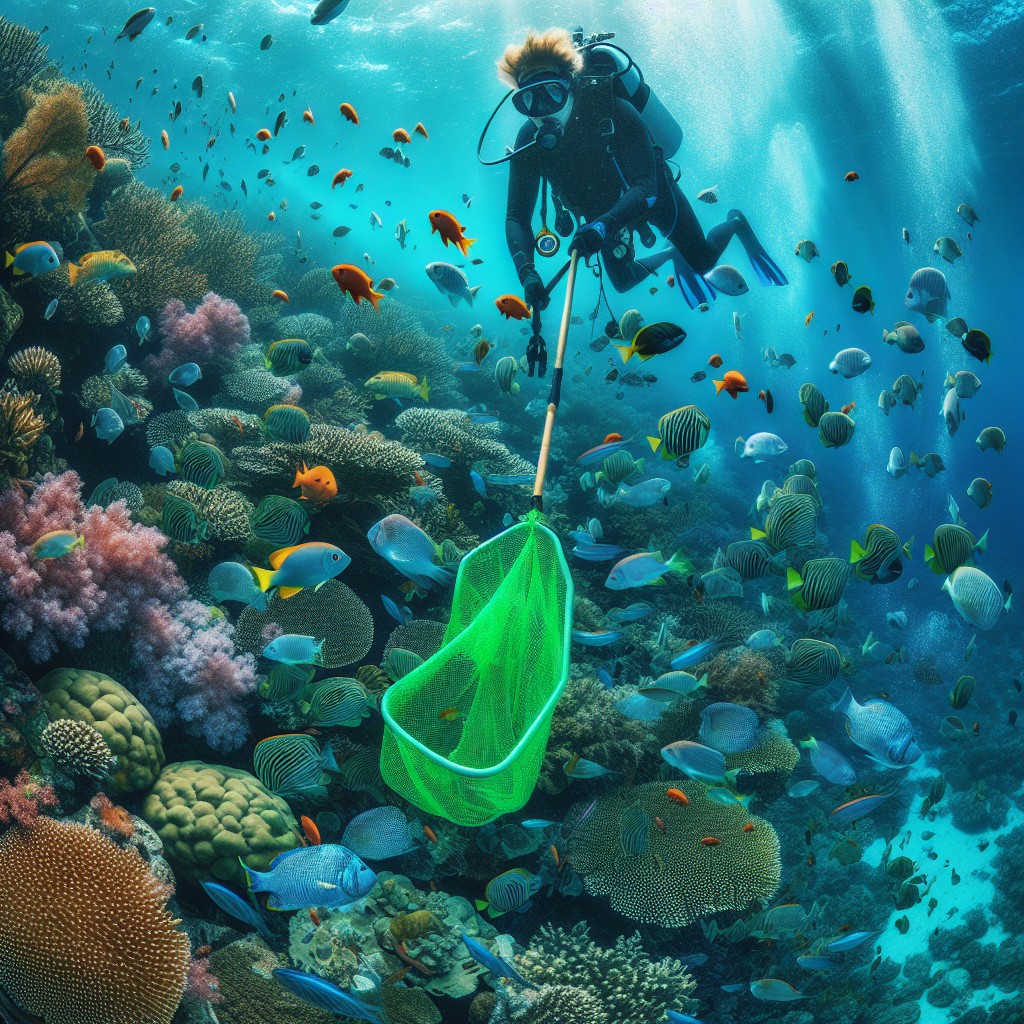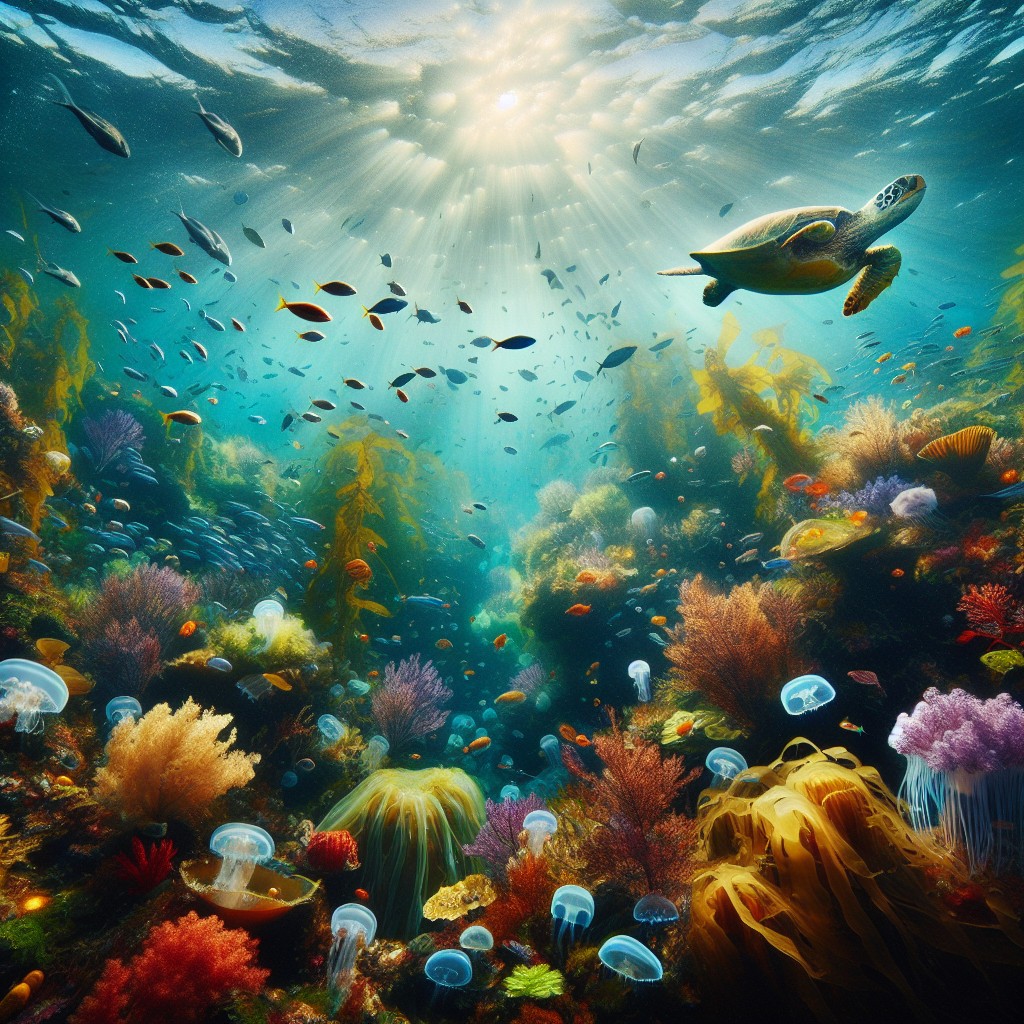Exploring Scuba Diving in Japan
Japan presents a spectacular array of scuba diving opportunities, making it an ideal destination for divers seeking new adventures. With its unique marine environments and diverse wildlife, there is something for everyone, whether they are beginners or seasoned divers.
Diverse Dive Opportunities
From vibrant coral reefs to intriguing shipwrecks, Japan is home to a variety of dive scenarios. Divers can experience encounters with magnificent marine life, including manta rays, hammerhead sharks, and many other species. An overview of the types of diving experiences available in Japan is as follows:
| Dive Type | Description | Best Time to Dive |
|---|---|---|
| Coral Reef Diving | Explore colourful reefs, teeming with diverse marine life. | April to November |
| Shipwreck Diving | Discover historical wreck sites off Japan’s coasts. | Year-round |
| Manta Ray Diving | Swim with reef manta rays in clear waters. | April to November |
| Hammerhead Shark Diving | Experience schools of hammerhead sharks during specific months. | September to March |
| Drift Ice Diving | Enjoy the unique experience of diving among floating ice. | Winter months |
Japan’s southern islands, including Okinawa and Ishigaki, offer particularly favourable conditions for scuba diving, with pleasant water temperatures and a rich variety of underwater ecosystems.
Popular Destinations
Among the top diving destinations in Japan, a few stand out due to their remarkable services and abundant marine life:
-
Ishigaki Island: Renowned for its incredible coral reefs and opportunities to dive with manta rays, Ishigaki Island provides divers with breathtaking underwater views.
-
Okinawa: This widely popular region is famed for its rich biodiversity and warm waters, perfect for beach and boat diving. It presents a multitude of dive sites, catering to both beginners and experienced divers.
-
Yonaguni Island: Known for its underwater ruins, Yonaguni attracts divers interested in combining history with their underwater explorations.
-
Hokkaido: For those seeking something different, Hokkaido offers ice diving experiences, providing a thrilling opportunity to dive under frozen waters. For more information, see our article on ice diving in hokkaido.
These diverse dive sites make it easy for divers to plan an unforgettable trip. Whether they wish to encounter sharks or explore vibrant coral ecosystems, the options are plentiful. For a list of additional dive destinations, see the best dive sites in japan.
Diving Options in Japan
Japan offers a variety of scuba diving experiences for both beginners and certified divers, ensuring that all enthusiasts can enjoy the underwater wonders of this diverse marine environment.
Introductory Diving Experiences
Introductory diving experiences in Japan cater to those who have yet to obtain a diving licence. These dives can reach depths of up to ten metres, allowing newcomers a taste of the underwater realm. The cost for a single introductory dive starts from around 10,000 yen, including all necessary diving equipment. Each dive typically lasts between 20 to 60 minutes.
Dive tour companies throughout Japan provide these introductory experiences alongside fun diving and certification courses. In popular areas like Okinawa, many dive shops offer services in English, making it easier for international visitors to participate. For those planning their diving excursions, online reservation platforms such as Klook are excellent resources for booking various diving activities.
| Experience Type | Cost (Yen) | Dive Duration |
|---|---|---|
| Introductory Dive | 10,000 | 20 – 60 minutes |
Fun Dives for Certified Divers
For divers who hold a valid diving licence, Japan offers fun dives at competitive prices. The typical cost is around 8,000 yen for a single dive. Those looking to explore more can opt for two dives at approximately 15,000 yen or three dives for around 20,000 yen. Specialised activities like night diving and private tours are available for an additional fee, providing even more options for adventure.
Whether diving from the beach or using boat charters, participants can enjoy the flexibility of choosing their preferred dive method. Boat tours are typically favoured for ease of access between dive sites. Dive shops almost universally provide gear rental, ensuring that divers need only bring a towel, a change of clothes, their insurance card, and their diving licence, if applicable.
| Dive Package | Cost (Yen) |
|---|---|
| Single Dive | 8,000 |
| Two Dives | 15,000 |
| Three Dives | 20,000 |
With plenty of opportunities available, both introductory and fun dives contribute to a fulfilling diving experience in Japan. For more information on specific sites and conditions, consider exploring articles on best dive sites in Japan and diving conditions in Japan.
Practical Aspects of Diving in Japan
When planning a diving holiday, understanding the practical aspects of scuba diving in Japan is essential. These include dive costs, what is included in the price, and the type of diving experience one can expect.
Dive Costs and Inclusions
Diving costs in Japan can vary widely depending on the type of dive and location. For those seeking an introductory experience, prices start from around 10,000 yen for a single dive. This price generally includes all necessary equipment, and the dives typically last between 20 and 60 minutes.
For certified divers, day rates for diving can exceed $100, with additional expenses for equipment rental and transportation to different dive sites. Below is a table summarising typical costs associated with diving in Japan:
| Item | Estimated Cost (JPY) |
|---|---|
| Introductory Experience Dive | From 10,000 |
| Single Certified Dive | Starting from 13,000 |
| Gear Rental | 2,000 – 5,000 |
| Accommodation (per night) | At least 5,000 |
| Flights (Naha to Ishigaki) | Over 10,000 |
It’s advisable for divers to bring towels, a change of clothes, an insurance card, and their diver’s license if applicable.
Beach vs. Boat Diving
Both beach diving and boat diving are popular options in Japan. Each has its distinct features and advantages. While beach dives can be more accessible and allow divers to explore nearby reefs, boat dives are often preferred for their convenience in reaching multiple dive sites.
| Feature | Beach Diving | Boat Diving |
|---|---|---|
| Accessibility | Easy access from shore | Requires boat trip |
| Dive Site Variety | Limited to nearby locations | Access to multiple dive sites |
| Experience Duration | Typically shorter | Longer dives possible |
| Gear Rental | Often available onsite | Usually included with dive package |
Regardless of the chosen method, divers can enjoy a diverse range of experiences in Japan, including opportunities to explore the stunning marine life in pristine waters. For more details on the best spots to dive, check out our guide to the best dive sites in Japan or learn more about diving in Okinawa.
Highlight Dive Locations in Ishigaki
Ishigaki Island, part of the Okinawa Prefecture in Japan, is renowned for its vibrant marine life and exceptional diving experiences. It is a must-visit destination for divers interested in encountering some of the ocean’s most majestic creatures, including manta rays and hammerhead sharks.
Manta Ray Diving
One of the standout features of diving in Ishigaki is the opportunity to swim with reef manta rays (Manta alfredi). A popular spot for this experience is Kabira Manta City, where divers frequently encounter these graceful giants gliding through the water.
The best time to dive with manta rays in Ishigaki is during the warmer months, particularly from May to October, when their visibility is optimal. Visitors report sightings of manta rays performing acrobatic breaches and feeding on plankton in the crystal-clear waters.
| Month | Average Water Temperature (°C) | Best Time for Manta Ray Sightings |
|---|---|---|
| January | 22 | Low |
| April | 24 | Moderate |
| July | 28 | High |
| October | 26 | Moderate |
For more information on swimming with manta rays, refer to our guide on diving with manta rays in japan.
Hammerhead Shark Encounters
Another exhilarating dive opportunity in Ishigaki is the chance to observe schools of hammerhead sharks during the months from September to March. The area around Yonaguni Island is particularly famous for these encounters, attracting divers from around the globe who seek the thrill of swimming alongside these iconic creatures.
These dives are generally held at deeper spots, making them ideal for experienced divers. The spectacular sight of hammerhead sharks congregating is truly a highlight of diving in Japan.
| Month | Hammerhead Shark Sightings | Recommended Experience Level |
|---|---|---|
| September | High | Advanced |
| December | Moderate | Advanced |
| March | High | Advanced |
For additional insights on diving with sharks, check out our detailed article on diving with sharks in japan.
The dive sites around Ishigaki not only offer the thrill of large marine life encounters but also feature stunning coral reefs and diverse marine species, providing a rich experience for all divers. For further exploration of the best dive locations in Japan, visit our section on best dive sites in japan.
Marine Life Encounters in Japan
Japan’s underwater ecosystems provide divers with remarkable encounters and unique experiences. From vibrant coral reefs to diverse marine species, the opportunities for exploration are abundant.
Coral Reef Health
Coral reefs are crucial to marine biodiversity and play a vital role in the health of oceanic ecosystems. Unfortunately, only 1% of Japan’s largest coral reef remains healthy, significantly impacted by a major bleaching event that caused extensive damage to these crucial habitats. While the state of the reefs poses challenges, divers can still appreciate the resilience of marine life that continues to thrive in these waters.
To better understand the condition of coral reefs in Japan, the table below highlights key metrics related to coral health:
| Metric | Value |
|---|---|
| Percentage of Healthy Coral | 1% |
| Major Bleaching Events | Recent Significant Events |
| Marine Life Variety Available | Turtles, octopus, trumpet fish, sweetlips, white tip reef sharks |
Visitors to Japan can still encounter a variety of marine species despite the challenges faced by coral health. Popular diving destinations like Ishigaki, Okinawa, present the opportunity to see magnificent creatures in their natural habitat.
Marine Species Diversity
Japan boasts a rich diversity of marine species, making it a prime location for underwater exploration. Divers often encounter a wide array of life in Japan’s waters, including turtles, octopus, trumpet fish, mandarine fish, and sweetlips. Furthermore, for those exploring the waters around Ishigaki, the chance to spot a white tip reef shark adds an element of thrill to the dive.
The following table illustrates some of the marine species commonly observed by divers in Japan:
| Marine Species | Notable Characteristics |
|---|---|
| Turtles | Graceful swimmers; several species present |
| Octopus | Known for camouflage; highly intelligent |
| Trumpet Fish | Distinctive shape; often seen in schools |
| Mandarine Fish | Bright colours; popular for underwater photography |
| Sweetlips | Recognizable for their varied colours |
| White Tip Reef Shark | Typically harmless; can be spotted around reefs |
The rich interactions with marine life reflect the overall biodiversity found in Japan’s waters, associating diving with both adventure and awareness. For more on Japan’s thriving underwater world, explore our page on marine life in japan waters and learn more about the specific diving conditions for a successful expedition with our guide on diving conditions in japan.
Data Protection in Japan
Understanding data protection laws is essential for scuba divers planning their next holiday in Japan. The Act on the Protection of Personal Information (APPI) governs how personal data is handled, ensuring that individuals’ privacy is respected and safeguarded.
Act on the Protection of Personal Information (APPI)
Japan’s data protection legislation, the APPI, was initially adopted in 2003. The law underwent significant amendments, coming into force on May 30, 2017, after a major overhaul in September 2015. These changes modernised the legal framework to better align with international standards, particularly reflecting the European Union’s General Data Protection Regulation (GDPR).
Key points of the APPI include:
| Key Aspect | Description |
|---|---|
| Applicability | The APPI applies to all business operators handling personal data of individuals in Japan, both domestic and foreign. |
| Enforcement Date | The latest amendments to the APPI were enforced on April 1, 2022. |
| Compliance | Companies may face increased scrutiny and fines for non-compliance with the provisions of the APPI. |
Japan notably became the first country to receive an adequacy decision from the European Commission in January 2019, recognising that its data protection measures meet GDPR standards. This is crucial for divers and businesses engaged in the tourism sector, ensuring they can collect, store, and manage personal data in a legally compliant manner.
Amendments and Compliance
The 2020 amendments brought substantial changes to the original APPI framework. One of the significant changes is the increase in fines related to noncompliance. The new measures act as a deterrent, aiming to elevate standards of data protection across all sectors, including those involved in scuba diving in Okinawa or wreck diving in Japan.
For businesses operating within Japan’s tourism and diving industries, it is imperative to understand these regulations. Companies must ensure effective policies and procedures are in place for data handling and protection to avoid penalties.
Understanding data protection regulations is vital for all individuals and organisations involved in the scuba diving community in Japan. The emphasis on personal data security-making it an essential component for divers looking to enjoy their time in Japan while ensuring their information remains safe and secure. For more insights into safety and operational regulations, divers can check information regarding diving conditions in Japan to stay informed.



